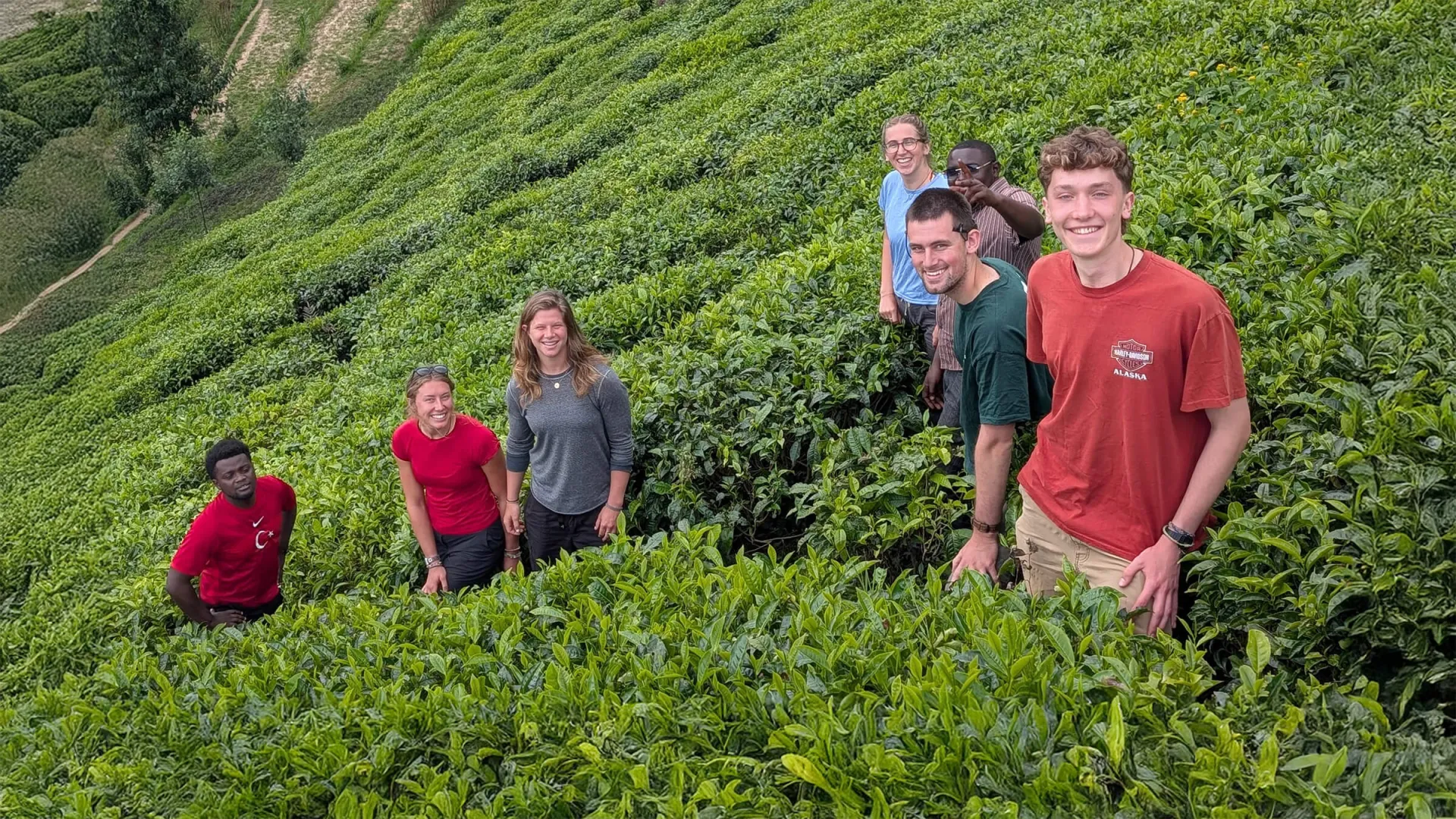The remote village of Kajinge, Rwanda, rests among steep slopes lush with banana plants and bean crops. The smell of green tea leaves drying over burning eucalyptus wafts through the air. Water is abundant here, evident in the slick clay soil and frequent mudslides the community endures. The problem? There is no convenient way to access the water or ensure it is free of harmful microorganisms.
Students in the College of Engineering and Mathematical Sciences’ club Engineers Without Borders (EWB) intend to remedy this. UVM students Sienna Dorr, Nathan Kellison-Miller, Cooper Petrie, and Jocie Pickhardt travelled to Kajinge for two weeks in May 2025 to meet with community stakeholders. The students were joined by travel mentors Lucy Toppen, a fourth-year PhD student at UVM, and Theron Matthews, a Burlington-based civil engineer. Along with their advisor, Civil and Environmental Engineering Associate Professor Matthew Scarborough, the students aim to design and help install a pipeline and chlorination system to bring clean water directly to Kajinge’s only school.
The school services about 1,100 students from ages five to 18. Each month, up to 100 students are sick with gastrointestinal illnesses the community attributes to the water supply. Currently, pipes transfer water from a spring in the hills down to the school as a constantly flowing but untreated source. During the rainy season, a higher volume of murky water can overwhelm the system, causing it to burst through and damage the existing PVC pipeline.
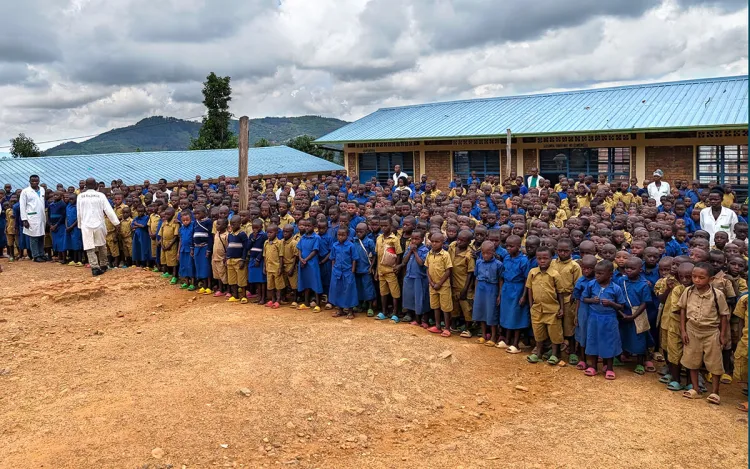
To address these issues, the residents of Kajinge applied for a partnership with EWB USA in collaboration with Integrated Development Action Rwanda (IDA-Rwanda), a non-governmental organization. The students in UVM’s chapter submitted a proposal for the project in May 2024, their first new assignment from EWB USA since the COVID-19 pandemic began. In the meantime, the club worked on other initiatives, such as assisting with the implementation of solar lighting at an orphanage and school in Tanzania from 2020 to 2023 through a different organization. They also assisted with flood recovery efforts in Vermont following the devastating events of 2023 and 2024.
But the project in Kajinge represents a true revitalization for UVM’s EWB chapter. When students returned to campus during the pandemic, they had to start from scratch. “We lost so much history about our club,” said Cooper Petrie, an Environmental Engineering master’s student, who served a term as EWB president during his undergraduate studies at UVM. This included fundraising ideas, alumni networks, and information about the project application process. Despite these challenges, EWB accepted their proposal for the project in Rwanda, and the students made the long-awaited trip to Kajinge in May.
One of the ongoing obstacles for the club members in Rwanda was the rocky ride to the rural village. The three-mile drive from their accommodation to Kajinge took about an hour each way due to washed out roads. Because the hamlet is so remote, most residents don’t have access to electricity, and none have indoor plumbing. As outsiders, the UVM students anticipated some wariness from the locals. Instead, they were greeted with celebrations of song and dance, as well as widespread engagement in their project from a multitude of stakeholders. “The relationship with the community, that was not a guarantee,” said Jocie Pickhardt, an Environmental Engineering senior and current EWB vice president, “That's something that we could have shown up and spent two weeks just trying to initiate a conversation.”
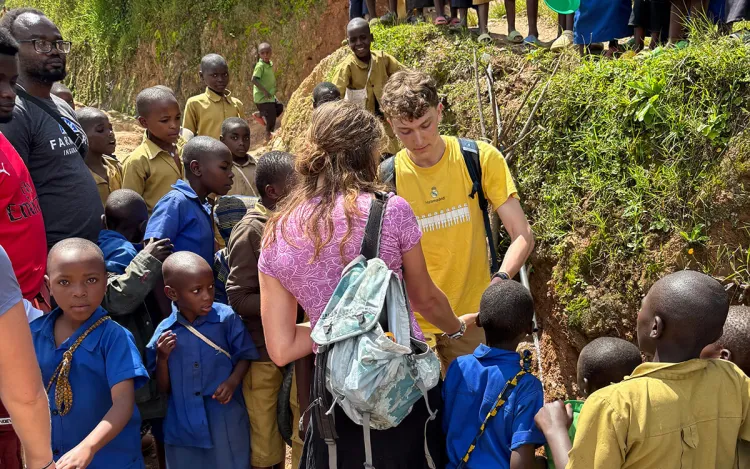
EWB members convened with the parent’s association, community leaders, local farmers, students, and school staff to share their plan for the pipeline and incorporate their feedback. Many residents expressed interest in paid employment constructing the new pipeline. The students also completed a topographical survey for the proposed system alongside Celestine, a Kajinge resident who designed the existing one.
The current PVC pipeline runs through yards and farms where residents disconnect the pipe to access the water for their needs, reconnecting it when they finish. Because of the current structure, many requested personal taps in their homes. However, such taps can “create conflict and possibly jeopardize the entire system for the kids,” said Petrie. When the students “would reiterate that our focus for the project right now is for the school, that's something that they were understanding of, because they love the school and love the kids,” said Pickhardt. To ensure other residents still have access, EWB members plan to incorporate a public tap halfway between the spring and the school.
The new pipeline will be gravity operated, taking advantage of Kajinge’s steep terrain. Approximately 800-meters-long, the new pipeline needs to be buried at least a meter underground to protect it from mudslides, sun damage, and access for tapping. Instead of PVC, it will be constructed of HDPE, a durable and flexible high-density polyethylene resin. The water will flow from the spring to a chlorination tank, where it will be treated to eliminate dangerous bacteria. From there, the water will flow into one or more collection tanks made of either brick and mortar or plastic.
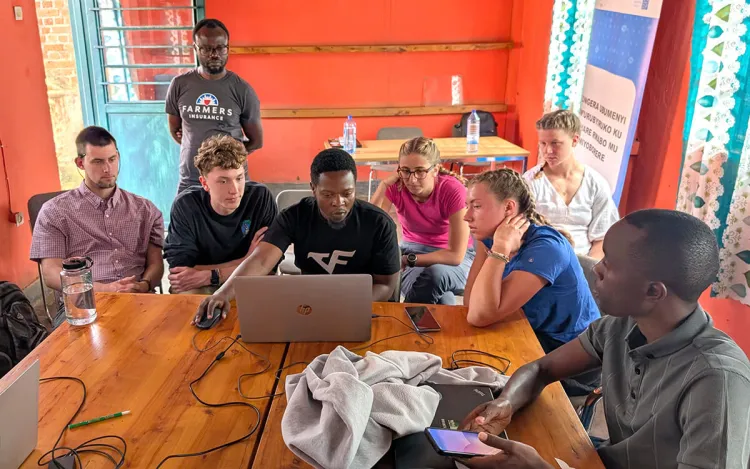
Unlike the current system, this edition won’t have a constant flow. The storage vessels will act “like a water tower,” said Petrie, with valves controlling water discharge during peak usage hours. The morning and evening are often the busiest because the school’s kitchen staff uses large quantities of water to cook lunch for the students. An additional tap is also planned for a currently unstaffed health office. The students and the community hope that having access to potable running water will help attract medical professionals back to Kajinge to reopen the clinic.
After they complete their design plan and submit it to EWB, the club plans to return to Kajinge within the next two years to begin the construction phase. They also need to fundraise between $80,000 and $100,000 to finance the project. It’s an ambitious goal, but the students are confident in their ability to succeed. “Our club is still relatively small compared to other chapters across the U.S.,” said Pickhardt. “But we do not lack motivation, passion, talent, or skill to get this project done. We just lack some funding.”
“Not taking what we have for granted, and taking what I'm studying and applying it to really change people's lives and help others.”
– Nathan Kellison-Miller
Sophomore, Civil Engineering
The venture has a high chance for long-term success because the residents already collaborate to preserve their current water infrastructure. Celestine will also learn to maintain the pipeline and establish a water committee to ensure the system operates sustainably in perpetuity. The students anticipate that many residents will want to be involved because their “pride (in their community) was unlike anything I've ever experienced before,” said Toppen.
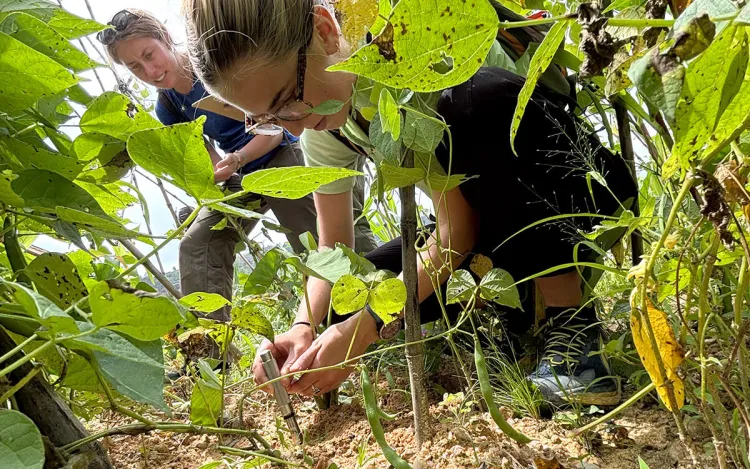
Connecting with the community in Kajinge was the most impactful part of the trip for the club members. “My biggest takeaway (is) making sure all the stakeholders that are involved in a project are up to date,” said Pickhardt. “I think just for my future, learning what I did in Kajinge is going to help me become a more well-rounded engineer.” For Nathan Kellison-Miller, a sophomore in Civil Engineering and current treasurer of the club, working with EWB is an invaluable mentorship experience. After his trip to Kajinge, he knows his time at UVM and beyond will be, “Not taking what we have for granted, and taking what I'm studying and applying it to really change people's lives and help others.” Petrie echoed this sentiment. “For my future, that's what I really want to be doing. It's just using everything I have to really be helping people who need help, whether that be in the U.S. or overseas.”
“We could not be more proud of these students who have not only successfully reestablished a thriving chapter of Engineers without Borders here at UVM in the wake of the COVID pandemic, but have also dedicated so much time and energy to apply their newly honed engineering skills to help ensure the school children of a remote village half a world away have access to clean water,” said CEMS Interim Dean Mandar Dewoolkar, also a professor and researcher in the Department of Civil and Environmental Engineering.
Scarborough emphasized how impressed he was by the students’ ability to connect with the stakeholders and by their enthusiasm for this intensive project. “Being responsible for giving people clean water is a significant undertaking, but it's a great demonstration of the role that engineers play in protecting public health,” he said to the EWB members. “And you're putting the public first, you're integrating the public into your decision making, and your work thus far is fantastic.”
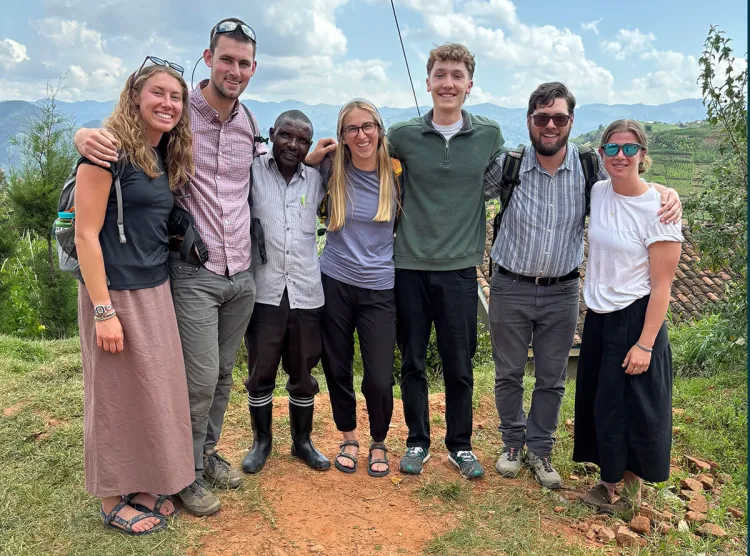
Help support EWB's Kajinge Pipeline Project
The Kajinge pipeline project is both ambitious and desperately needed. As with all engineering projects, regardless of scale, securing adequate funding is a critical component of its success. UVM's EWB club members have launched a fundraising campaign in coordination with the University of Vermont Foundation to help raise the estimated $80,000 to $100,000 needed to fund the design and installation of the new water supply for Kajinge's school.Donate Today!
